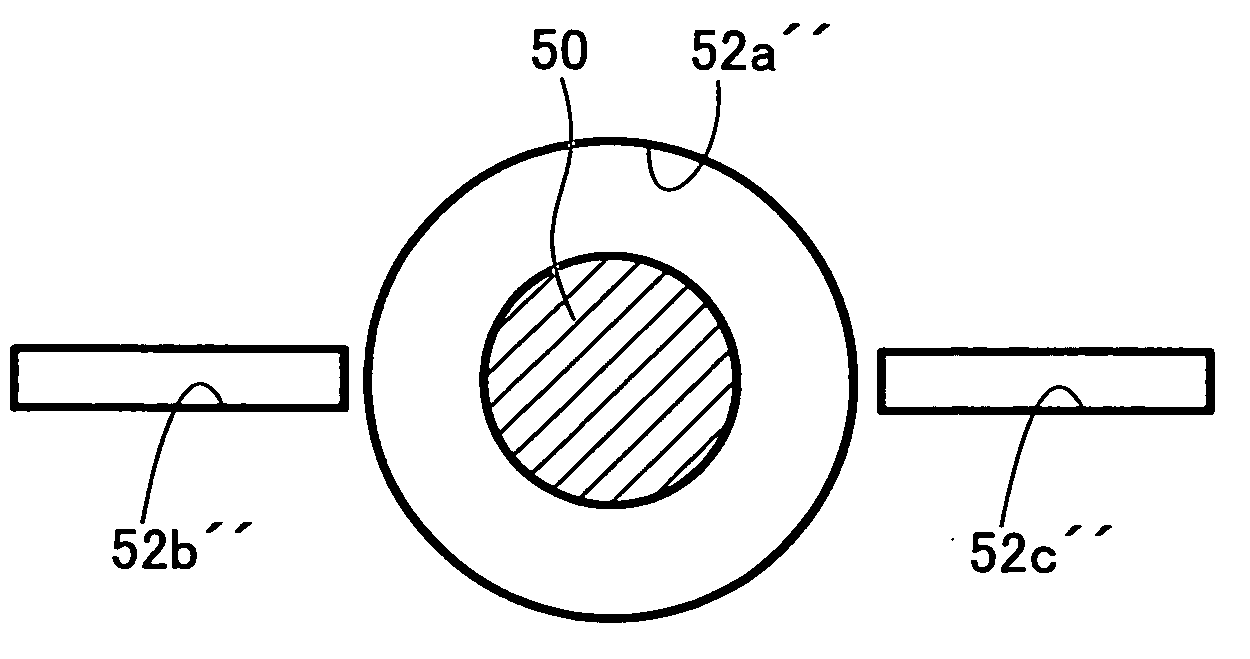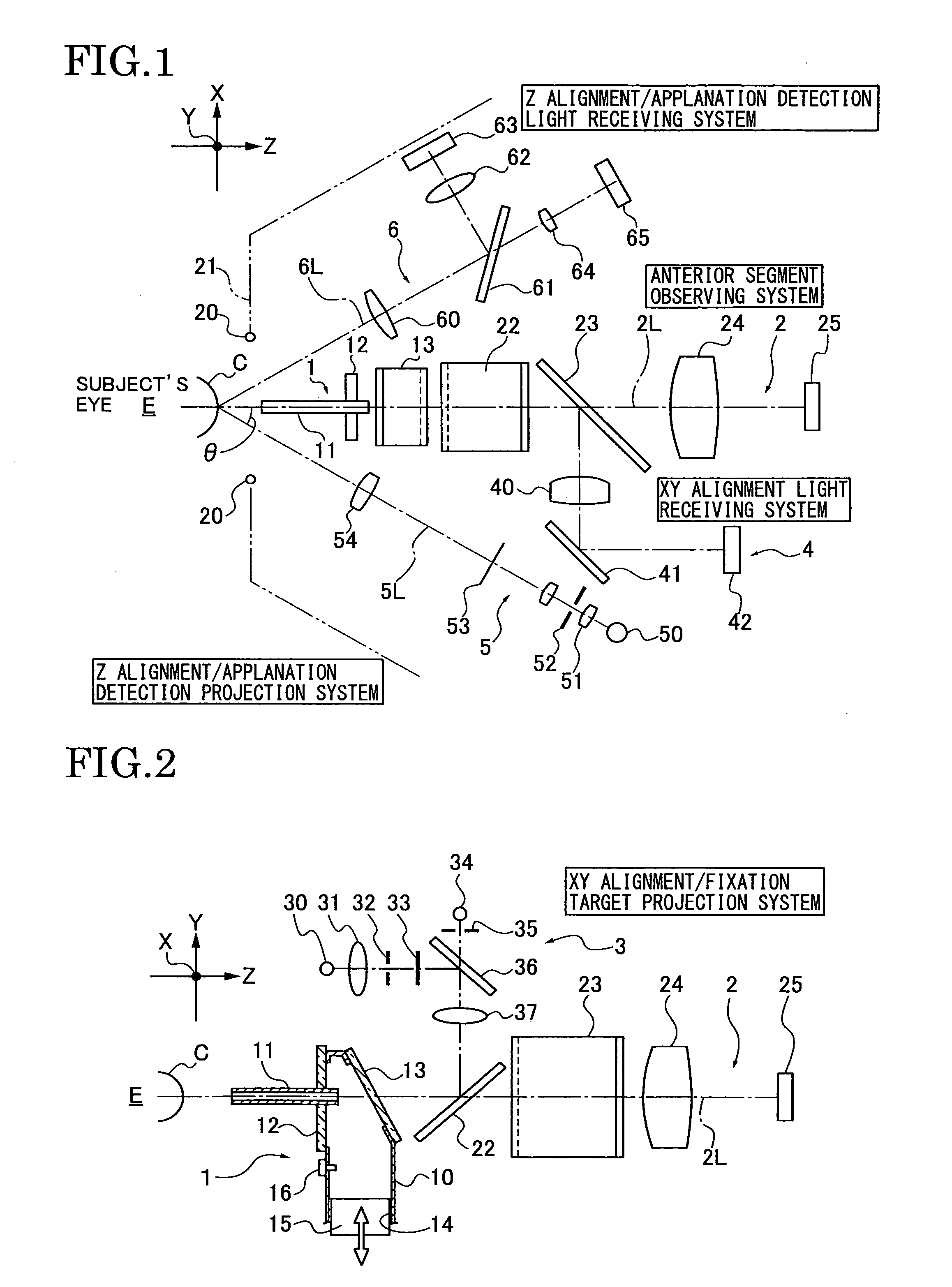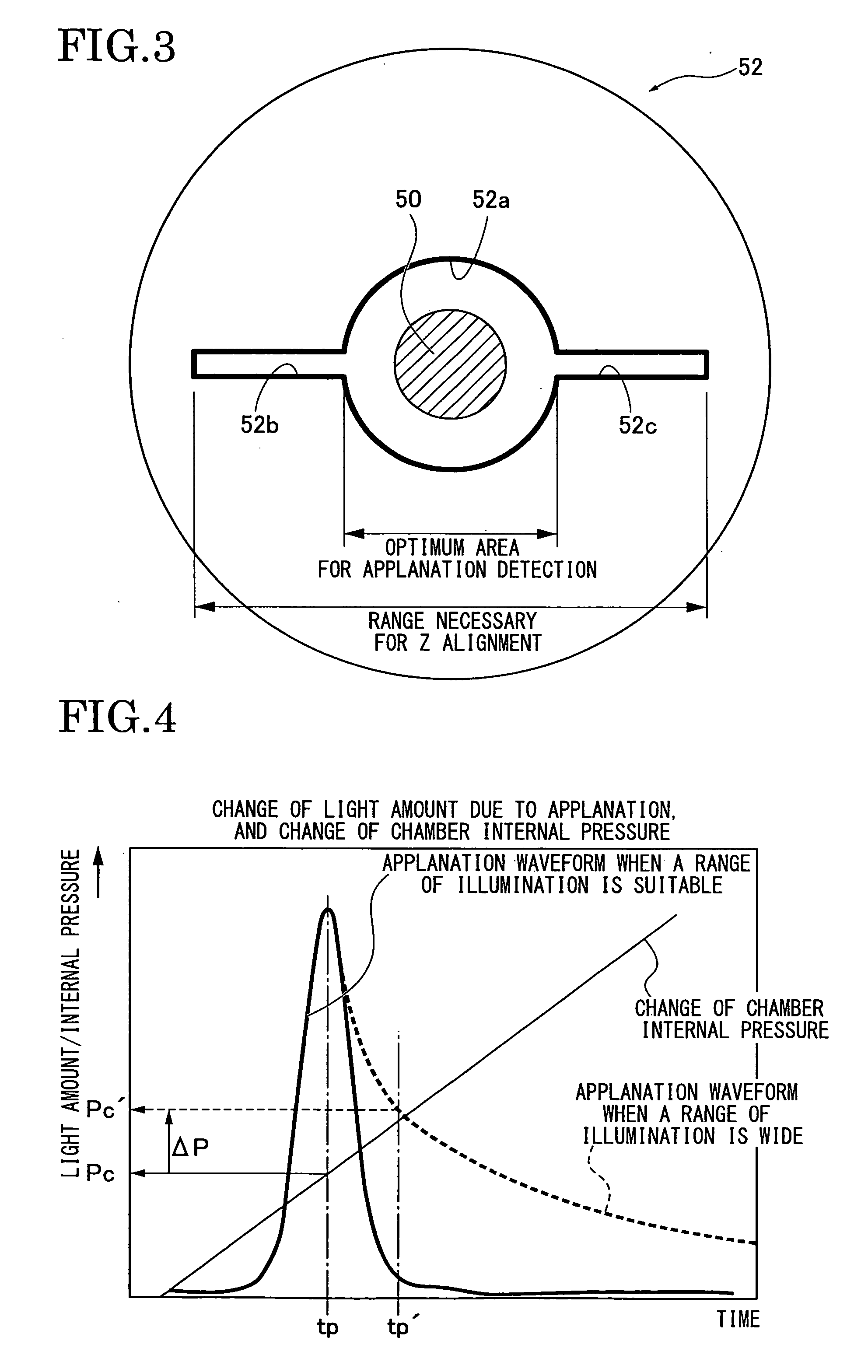Non-contact type tonometer
a tonometer and non-contact technology, applied in the field of tonometers, can solve the problems of large instruments, inability to secure the accuracy of both the applanation and the range needed for xy alignment of the tonometer, and the complexity of the optical system of the tonometer, so as to achieve compact optical systems and relatively simple results
- Summary
- Abstract
- Description
- Claims
- Application Information
AI Technical Summary
Benefits of technology
Problems solved by technology
Method used
Image
Examples
Embodiment Construction
, and the first embodiment when a light amount of a Z alignment light receiving sensor changes due to a movement of the cornea of a subject's eye.
[0023]FIG. 8 is a front view showing Variation 1 of the shape of an aperture.
[0024]FIG. 9 is a front view showing Variation 2 of the shape of an aperture.
DETAILED DESCRIPTION OF THE PREFERRED EMBODIMENTS
[0025]A preferred embodiment for carrying out a non-contact type tonometer of the present invention is described below with reference to a first embodiment shown in the accompanying drawings.
[0026]First, a configuration is described.
[0027]FIG. 1 is a plan arrangement view showing an optical system of a non-contact type tonometer of the first embodiment. FIG. 2 is a side arrangement view showing the optical system thereof.
[0028]The non-contact type tonometer of the first embodiment is configured to measure an intraocular pressure by deforming the cornea of a subject's eye E in a non-contact state. As shown in FIG. 1, this non-contact type to...
PUM
 Login to View More
Login to View More Abstract
Description
Claims
Application Information
 Login to View More
Login to View More - R&D
- Intellectual Property
- Life Sciences
- Materials
- Tech Scout
- Unparalleled Data Quality
- Higher Quality Content
- 60% Fewer Hallucinations
Browse by: Latest US Patents, China's latest patents, Technical Efficacy Thesaurus, Application Domain, Technology Topic, Popular Technical Reports.
© 2025 PatSnap. All rights reserved.Legal|Privacy policy|Modern Slavery Act Transparency Statement|Sitemap|About US| Contact US: help@patsnap.com



